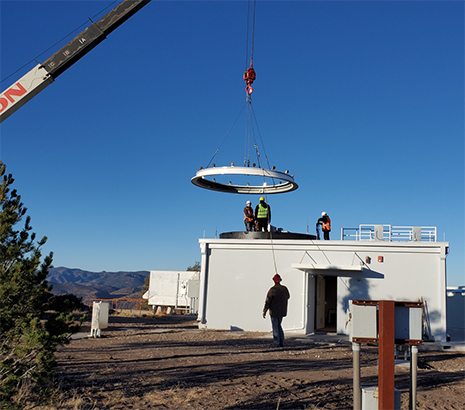MGO - McDonald Geodetic Observatory
The McDonald Geodetic Observatory (MGO) is located near Ft. Davis, Texas and is co-located with a number of astronomical observatories. The site has been a pioneering site for lunar and satellite laser ranging development since the 1960s. The University of Texas at Austin developed and tested the first Transportable Laser Ranging System (TLRS-1) at the site during the late 1970s and early 1980s. The first acquisition of LAGEOS by the MLRS occurred in August, 1981, and the first lunar acquisition occurred in August, 1983. In 1988, MLRS was relocated from its original location between Mt. Locke and Mt. Fowlkes to its current site on Mt. Fowlkes.
A permanent GNSS receiver is co-located at the McDonald site. A VLBA site is located approximately 8 km from the system. A VLBI system was located near that site but stopped operations in the 1980s.
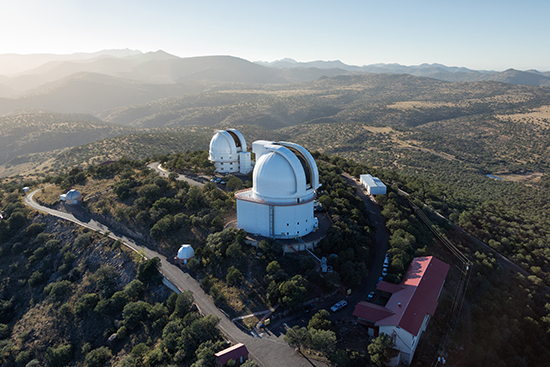
Telescopes at McDonald Observatory (Image credit: The University of Texas McDonald Observatory)
Recent news:
MGO SGSLR dome is installed and passes Site Acceptance Testing
January 25, 2020
The MGO SGSLR dome installation occurred January 22nd through the 25th with the Site Acceptance Testing successfully completed on the 25th. Participating in the installation was a four-person team from the manufacturer, Baader Planetarium, as well as Howard Donovan (KBR), Alice Nelson (KBR) and Jan McGarry (NASA/GSFC). Also there for this installation was Ole Klingan from the Norwegian Mapping Authority (Kartverket). Ole was on the trip to prepare for the September installation of the same type of dome at the SGSLR facility at Ny-Ålesund. Not on the trip, but critical to the planning and execution of the installation, was the KBR SGSLR manager, Scott Wetzel (KBR). The SGSLR team would like to thank the University of Texas at Austin for their continued support of the SGSLR work.
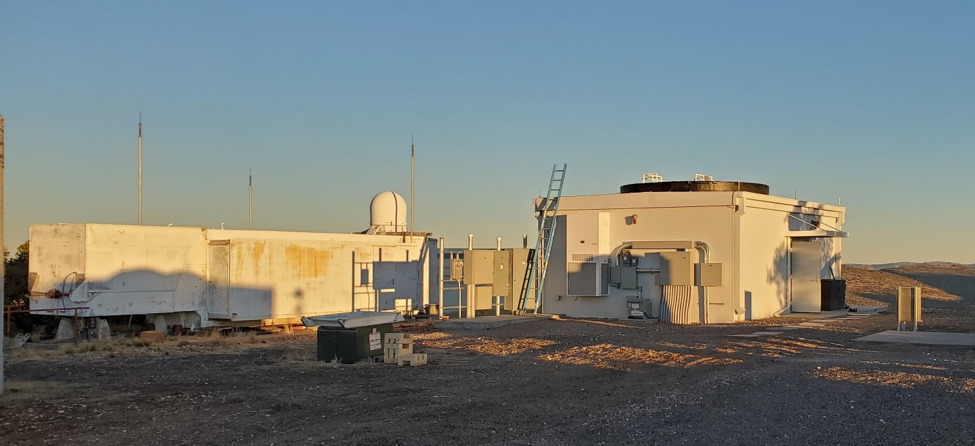
SGSLR shelter (building to the right) before the dome installation. The black dome ring wall can clearly be seen atop the SGSLR shelter. The legacy MLRS SLR system with its radar on top is to the left in the picture.
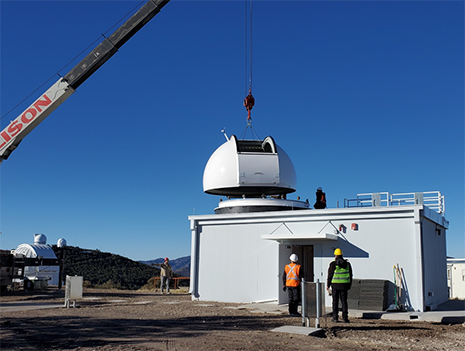
Lift of the dome onto the dome ring. The McDonald Observatory 82" and 107" telescope facilities can be seen on top of Mt Locke in the background to the left in the picture.
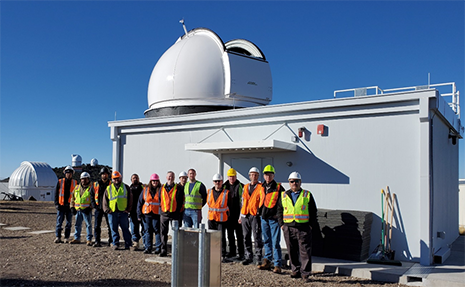
The team picture after the dome installation. From left to right: Jesus Alvarez (Longhorn Electrical Services), Jose Medrano (Veliz Construction), Jose Gonzales (Longhorn Electrical Services), Eusebio (Chevo) Terrazas (University of Texas at Austin), Victor Silva (Veliz Contstruction), Alice Nelson (KBR), Joe Sadowski (KBR), Igor Deytsev (Baader Planetarium, Germany), Ole Klingan (Karverket, Norway), Bernd Rosenstein (Baader Planetarium, Germany), Gennadiy Kositski (Baader Planetarium, Germany), Martin Rietze (Baader Planetarium, Germany), Howard (Bud) Donovan (KBR), Frank Sierra (Veliz Construction)
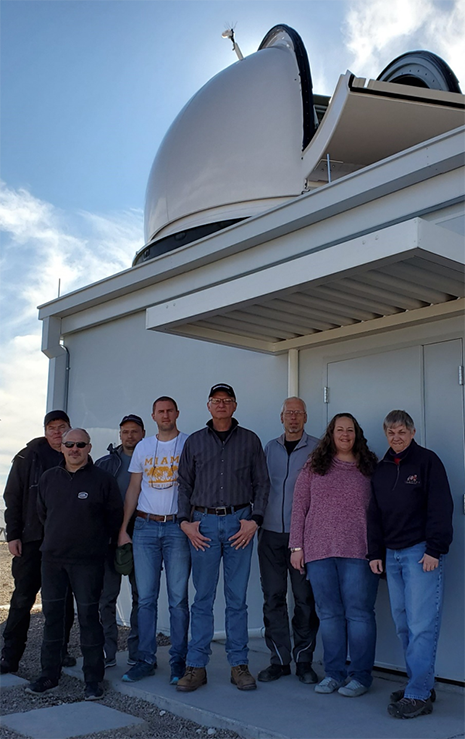
The team after a successful Site Acceptance Testing of the dome. From left to right: Gennadiy Kositski (Baader Planetarium, Germany), Bernd Rosenstein (Baader Planetarium, Germany), Igor Deytsev (Baader Planetarium, Germany), Ole Klingan (Karverket, Norway), Howard (Bud) Donovan (KBR), Martin Rietze (Baader Planetarium, Germany), Alice Nelson (KBR), Jan McGarry (NASA/GSFC).
Read all MGO site news
- Responsible NASA Official : Stephen Merkowitz
- Web Developers: 610 Web Dev
- Contact Us
- Last modified date: Apr 26, 2021
- Privacy Policy & Important Notices





